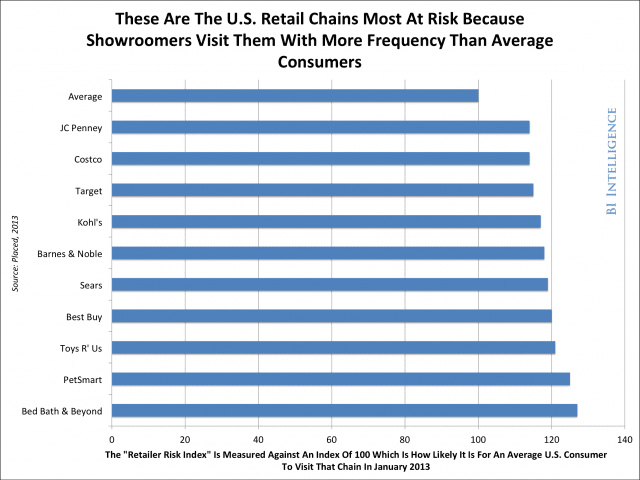Retail is anywhere and everywhere, available to anyone at anytime.
This shift away from set store hours to open online access has brought about challenge and opportunity, winners and losers. As traditional retailers battle with lean upstarts for share of wallet, shoppers have adapted how and where they shop. Showrooming, or viewing an item in a store and purchasing it online, continues to be a real challenge for physical retailers, resulting in more and more dollars migrating online.
A recent Business Insider article analyzed the retailers most at risk from showrooming, brought to life in the below chart.

Some observations from this data:
- As a category, department stores seem to be suffering the most from showrooming. This has led retailers like Belk to focus on omni-channel retailing.
- Niche big box retailers across all categories are feeling the impact of showrooming.
- Target is on this list, while Walmart is not. This is testimony to Walmart's aggressive investments in digital.
There are broad and far reaching implications to showrooming. While it is tempting to want a list of easy answers, the reality is that showrooming is a multi-disciplinary challenge, touching every aspect of retail. It requires a thorough assessment of brand, products, pricing, real estate and experience against competitors (physical/digital) and shopper behavior.
Fundamentally, showrooming is a shopper marketing challenge. And that's where Theory House can help.
Retailers need to be willing to take a broader view of the challenge, beyond the obvious answer of price matching online competitors. Showrooming is proof that shoppers have adapted their approach to purchasing, and as a result retailers need to adapt their approach to retailing. Like shopper marketing, this has to start by taking a shopper's view of the situation.




